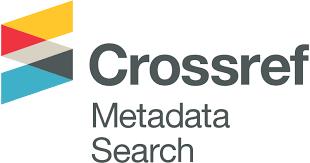Thực thi thuật toán băm BLAKE3 trên bo mạch phát triển raspberry Pi
Email:
tuananh4796@gmail.com
Từ khóa:
BLAKE3, BLAKE3, Blockchain, IoT, cấu trúc cây Merkle, Raspberry Pi, thuật toán băm, Blockchain, IoT, cấu trúc cây Merkle, Raspberry Pi, thuật toán băm
Tóm tắt
Sự phát triển mạnh mẽ và xu hướng hội tụ giữa công nghệ blockchain và Internet vạn vật đã đặt ra những yêu cầu ngày càng cao về hiệu suất xử lý, độ tin cậy và bảo mật trong các hệ thống phân tán. Trong bối cảnh đó, việc lựa chọn và tối ưu hóa thuật toán băm đóng vai trò then chốt, với BLAKE3 được đề xuất như một giải pháp tiềm năng nhờ đặc tính tốc độ tính toán nhanh, tiêu tốn ít tài nguyên và đảm bảo mức độ an toàn mật mã cao, được thiết kế để tối ưu hóa tốc độ trên nhiều nền tảng phần cứng khác nhau. Trong nghiên cứu này, nhóm tác giả tiến hành cài đặt thuật toán băm BLAKE3 trên bo mạch phát triển Raspberry Pi sử dụng hệ điều hành Raspberry Pi OS với ngôn ngữ lập trình Python và đánh giá thời gian thực thi của thuật toán bằng cách đo lường thời gian băm của các chuỗi ký tự có độ dài khác nhau. Kết quả cho thấy BLAKE3 có tốc độ băm ổn định và vượt trội so với các thuật toán băm truyền thống như SHA-256 và SHA-3, đặc biệt trên các thiết bị có khả năng xử lý tốt hơn. Nghiên cứu này cung cấp cái nhìn tổng quan về tính khả thi của BLAKE3 trong môi trường nhúng và có thể là tiền đề cho các nghiên cứu tối ưu hóa tiếp theoTài liệu tham khảo
[1]. X. Hou, J. Breier, Cryptography and Embedded Systems Security, Springer, 2024. https://doi.org/10.1007/978-3-031-62205-2
[2]. C. Silva, V. A. Cunha, J. P. Barraca, R. L. Aguiar, Analysis of the cryptographic algorithms in IoT communications, Information Systems Frontiers, 26 (2024) 1243-1260. https://doi.org/10.1007/s10796-023-10383-9
[3]. S. R. Prasanna, B. S. Premananda, Performance Analysis of MD5 and SHA-256 Algorithms to Maintain Data Integrity, 2021 International Conference on Recent Trends on Electronics, Information, Communication & Technology (RTEICT), IEEE, (2021) 246-250. https://doi.org/10.1109/RTEICT52294.2021.9573660
[4]. H. Choi, S. C. Seo, Fast Implementation of SHA-3 in GPU Environment, IEEE Access, 9 (2021) 144574-144586. https://doi.org/10.1109/ACCESS.2021.3122466
[5]. Z. Abdullah Jasim, A. Kadhim Hadi, Optimizing Blockchain Network Performance Using Blake3 Hash Function in POS Consensus Algorithm, IEEE Access, 13 (2025) 44760-44774, https://doi.org/10.1109/ACCESS.2025.3546723
[6]. J. O’Connor, J. P. Aumasson, S. Neves, Z. Wilcox-O’Hearn, BLAKE3: one function, fast everywhere, URL https://github.com/BLAKE3-team/BLAKE3-specs/blob/master/blake3.pdf, 2020, Truy cập tháng 3 năm 2025
[7]. M. Pandya, Performance Evaluation of Hashing Algorithms on Commodity Hardware, arXiv preprint (2024). https://doi.org/10.48550/arXiv.2407.08284
[8]. A. Hłobaż, Analysis of the possibility of using selected hash functions submitted for the SHA-3 competition in the SDEx encryption method, International Journal of Electronics and Telecommunications, 68 (2022) 57-62. https://doi.org/10.24425/ijet.2022.139848
[9]. K. Jang, S. Lim, Y. Oh, H. Kim, A. Baksi, S. Chakraborty, H. Seo, Quantum implementation and analysis of SHA-2 and SHA-3, IEEE Transactions on Emerging Topics in Computing (2025) 1-15. https://doi.org/10.1109/TETC.2025.3546648
[10]. S. Chouhan, G. Sharma, A New Era of Elections: Leveraging Blockchain for Fair and Transparent Voting, arXiv preprint arXiv:2502.16127 (2025). https://doi.org/10.48550/arXiv.2502.16127
[11]. G. Al-Asad, M. Al-Husainy, M. Bani-Hani, A. Al-Zu’bi, S. Albatienh, H. Abuoliem, Comparative Assessment of Hash Functions in Securing Encrypted Images, Engineering, Technology & Applied Science Research, 14 (2024) 18750-5. https://doi.org/10.48084/etasr.8961
[12]. N. Kolomeec, I. Sutormin, D. Bykov, M. Panferov, T. Bonich, On additive differential probabilities of the composition of bitwise exclusive-or and a bit rotation, Cryptography and Communication, 17 (2025) 541-570. https://doi.org/10.1007/s12095-025-00773-y
[13]. N. Soffer, E. Waisbard, An Efficient Hash Function Construction for Sparse Data, Proceedings of the 21st International Conference on Security and Cryptography – SECRYPT, 1 (2024) 698-703. https://doi.org/10.5220/0012764500003767
[14]. J. Sugier, Power Analysis of BLAKE3 Pipelined Implementations in FPGA Devices, International Conference on Dependability and Complex Systems, Springer Nature Switzerland, Springer, Cham (2023) 295-308. https://doi.org/10.1007/978-3-031-37720-4_27
[15]. X. Zou, Y. Peng, T. Li, L. Kong, Z. Pang, L. Zhang, Accelerating Blake3 in RISC-V, 2nd International Conference on Computing, Communication, Perception and Quantum Technology (CCPQT), Xiamen, China, (2023) 296-330. https://doi.org/10.1109/CCPQT60491.2023.00057
[16]. J. Sugier, FPGA Implementations of BLAKE3 Compression Function with Intra-Round Pipelining, International Conference on Dependability and Complex Systems, Cham: Springer International Publishing (2022) 319-330. https://doi.org/10.1007/978-3-031-06746-4_31
[17]. J. Sugier, Dedicated FPGA Resources in Improving Power Efficiency of Implementations of BLAKE3 Hash Function, International Conference on Dependability of Computer Systems, Cham: Springer Nature Switzerland (2024) 283-295. https://doi.org/10.1007/978-3-031-61857-4_28
[18]. J. Sugier, Comparison of power consumption in pipelined implementations of the BLAKE3 cipher in FPGA devices, International Journal of Electronics and Telecommunications, 70 (2024) 23-30. https://doi.org/10.24425/ijet.2023.147710
[19]. K. Tajane, R. Pitale, S. Zambre, H. Huda, A. Utage, V. Dhar, Efficient Cloud Data Deduplication with Blake3 and Secure Transfer using AES, 2024 4th International Conference on Pervasive Computing and Social Networking (ICPCSN), Salem, India, (2024) 572-579. https://doi.org/10.24425/ijet.2023.147710
[20]. I. T. Ciocan, E. A. Kelesidis, D. Maimuţ, L. Morogan, A Modified Argon2i Using a Tweaked Variant of Blake3, 26th IEEE Asia-Pacific Conference on Communications (APCC), IEEE (2021) 271-274. https://doi.org/10.1109/APCC49754.2021.9609933
[2]. C. Silva, V. A. Cunha, J. P. Barraca, R. L. Aguiar, Analysis of the cryptographic algorithms in IoT communications, Information Systems Frontiers, 26 (2024) 1243-1260. https://doi.org/10.1007/s10796-023-10383-9
[3]. S. R. Prasanna, B. S. Premananda, Performance Analysis of MD5 and SHA-256 Algorithms to Maintain Data Integrity, 2021 International Conference on Recent Trends on Electronics, Information, Communication & Technology (RTEICT), IEEE, (2021) 246-250. https://doi.org/10.1109/RTEICT52294.2021.9573660
[4]. H. Choi, S. C. Seo, Fast Implementation of SHA-3 in GPU Environment, IEEE Access, 9 (2021) 144574-144586. https://doi.org/10.1109/ACCESS.2021.3122466
[5]. Z. Abdullah Jasim, A. Kadhim Hadi, Optimizing Blockchain Network Performance Using Blake3 Hash Function in POS Consensus Algorithm, IEEE Access, 13 (2025) 44760-44774, https://doi.org/10.1109/ACCESS.2025.3546723
[6]. J. O’Connor, J. P. Aumasson, S. Neves, Z. Wilcox-O’Hearn, BLAKE3: one function, fast everywhere, URL https://github.com/BLAKE3-team/BLAKE3-specs/blob/master/blake3.pdf, 2020, Truy cập tháng 3 năm 2025
[7]. M. Pandya, Performance Evaluation of Hashing Algorithms on Commodity Hardware, arXiv preprint (2024). https://doi.org/10.48550/arXiv.2407.08284
[8]. A. Hłobaż, Analysis of the possibility of using selected hash functions submitted for the SHA-3 competition in the SDEx encryption method, International Journal of Electronics and Telecommunications, 68 (2022) 57-62. https://doi.org/10.24425/ijet.2022.139848
[9]. K. Jang, S. Lim, Y. Oh, H. Kim, A. Baksi, S. Chakraborty, H. Seo, Quantum implementation and analysis of SHA-2 and SHA-3, IEEE Transactions on Emerging Topics in Computing (2025) 1-15. https://doi.org/10.1109/TETC.2025.3546648
[10]. S. Chouhan, G. Sharma, A New Era of Elections: Leveraging Blockchain for Fair and Transparent Voting, arXiv preprint arXiv:2502.16127 (2025). https://doi.org/10.48550/arXiv.2502.16127
[11]. G. Al-Asad, M. Al-Husainy, M. Bani-Hani, A. Al-Zu’bi, S. Albatienh, H. Abuoliem, Comparative Assessment of Hash Functions in Securing Encrypted Images, Engineering, Technology & Applied Science Research, 14 (2024) 18750-5. https://doi.org/10.48084/etasr.8961
[12]. N. Kolomeec, I. Sutormin, D. Bykov, M. Panferov, T. Bonich, On additive differential probabilities of the composition of bitwise exclusive-or and a bit rotation, Cryptography and Communication, 17 (2025) 541-570. https://doi.org/10.1007/s12095-025-00773-y
[13]. N. Soffer, E. Waisbard, An Efficient Hash Function Construction for Sparse Data, Proceedings of the 21st International Conference on Security and Cryptography – SECRYPT, 1 (2024) 698-703. https://doi.org/10.5220/0012764500003767
[14]. J. Sugier, Power Analysis of BLAKE3 Pipelined Implementations in FPGA Devices, International Conference on Dependability and Complex Systems, Springer Nature Switzerland, Springer, Cham (2023) 295-308. https://doi.org/10.1007/978-3-031-37720-4_27
[15]. X. Zou, Y. Peng, T. Li, L. Kong, Z. Pang, L. Zhang, Accelerating Blake3 in RISC-V, 2nd International Conference on Computing, Communication, Perception and Quantum Technology (CCPQT), Xiamen, China, (2023) 296-330. https://doi.org/10.1109/CCPQT60491.2023.00057
[16]. J. Sugier, FPGA Implementations of BLAKE3 Compression Function with Intra-Round Pipelining, International Conference on Dependability and Complex Systems, Cham: Springer International Publishing (2022) 319-330. https://doi.org/10.1007/978-3-031-06746-4_31
[17]. J. Sugier, Dedicated FPGA Resources in Improving Power Efficiency of Implementations of BLAKE3 Hash Function, International Conference on Dependability of Computer Systems, Cham: Springer Nature Switzerland (2024) 283-295. https://doi.org/10.1007/978-3-031-61857-4_28
[18]. J. Sugier, Comparison of power consumption in pipelined implementations of the BLAKE3 cipher in FPGA devices, International Journal of Electronics and Telecommunications, 70 (2024) 23-30. https://doi.org/10.24425/ijet.2023.147710
[19]. K. Tajane, R. Pitale, S. Zambre, H. Huda, A. Utage, V. Dhar, Efficient Cloud Data Deduplication with Blake3 and Secure Transfer using AES, 2024 4th International Conference on Pervasive Computing and Social Networking (ICPCSN), Salem, India, (2024) 572-579. https://doi.org/10.24425/ijet.2023.147710
[20]. I. T. Ciocan, E. A. Kelesidis, D. Maimuţ, L. Morogan, A Modified Argon2i Using a Tweaked Variant of Blake3, 26th IEEE Asia-Pacific Conference on Communications (APCC), IEEE (2021) 271-274. https://doi.org/10.1109/APCC49754.2021.9609933
Tải xuống
Chưa có dữ liệu thống kê

Nhận bài
03/03/2025
Nhận bài sửa
08/04/2025
Chấp nhận đăng
10/06/2025
Xuất bản
15/06/2025
Chuyên mục
Công trình khoa học
Kiểu trích dẫn
Đàm Đức, T., & Đặng Tuấn, A. (1749920400). Thực thi thuật toán băm BLAKE3 trên bo mạch phát triển raspberry Pi. Tạp Chí Khoa Học Giao Thông Vận Tải, 76(5), 701-712. https://doi.org/10.47869/tcsj.76.5.5
Số lần xem tóm tắt
84
Số lần xem bài báo
42









